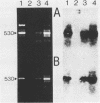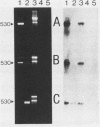Abstract
The polymerase chain reaction (PCR) based on the selective amplification of a 530-bp fragment of the gene encoding the proline-rich antigen of Mycobacterium leprae was applied on sections of fixed or frozen biopsy samples from leprosy patients. A simple procedure for the extraction of DNA from M. leprae in clinical specimens that provided suitable template DNA for amplification was developed. When PCR was applied on frozen sections, positive amplification in samples from all untreated acid-fast bacillus (AFB)-positive patients and in samples from 56% of the untreated AFB-negative patients could be detected, while biopsy samples from patients with skin diseases other than leprosy were all PCR negative. With neutral Formalin-fixed biopsy samples, positive amplification in 92% of the samples from untreated AFB-positive patients and in 61% of the samples from untreated AFB-negative patients could be detected by PCR. Biopsy samples exposed to mercuric chloride or nonbuffered formaldehyde containing fixatives were not suitable for application of PCR. This PCR holds promise as a tool for studies on M. leprae infection.
Full text
PDF
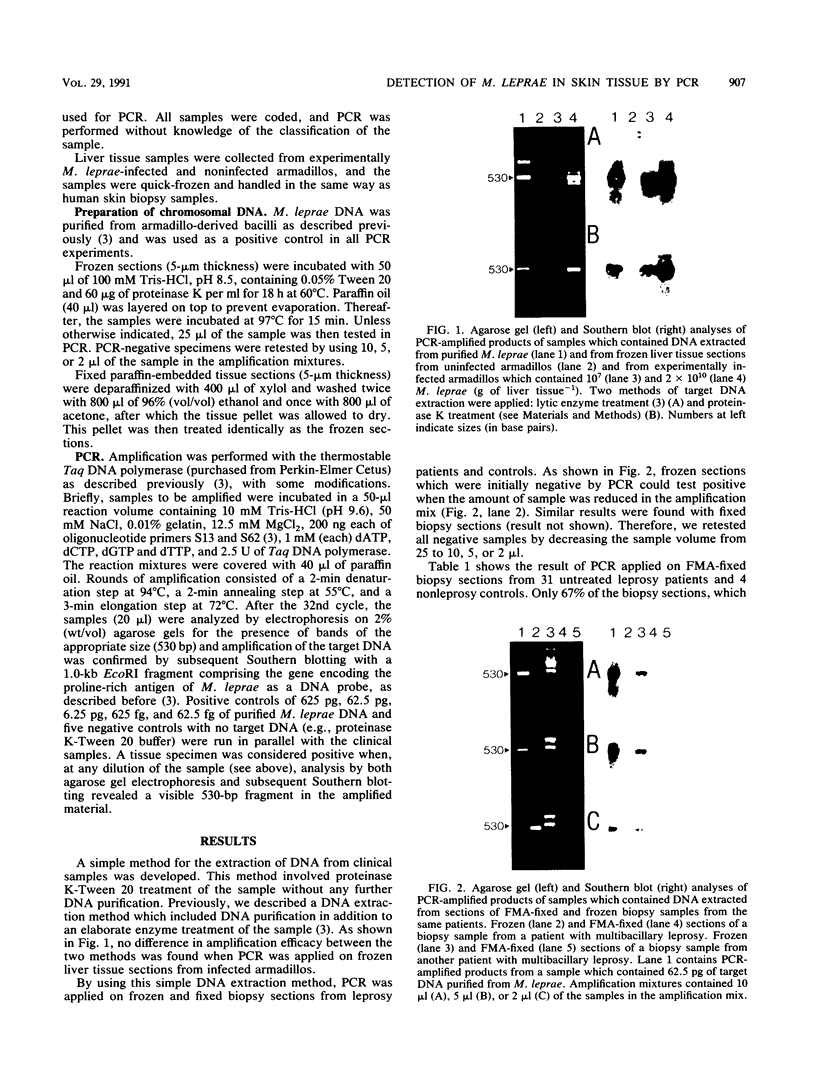
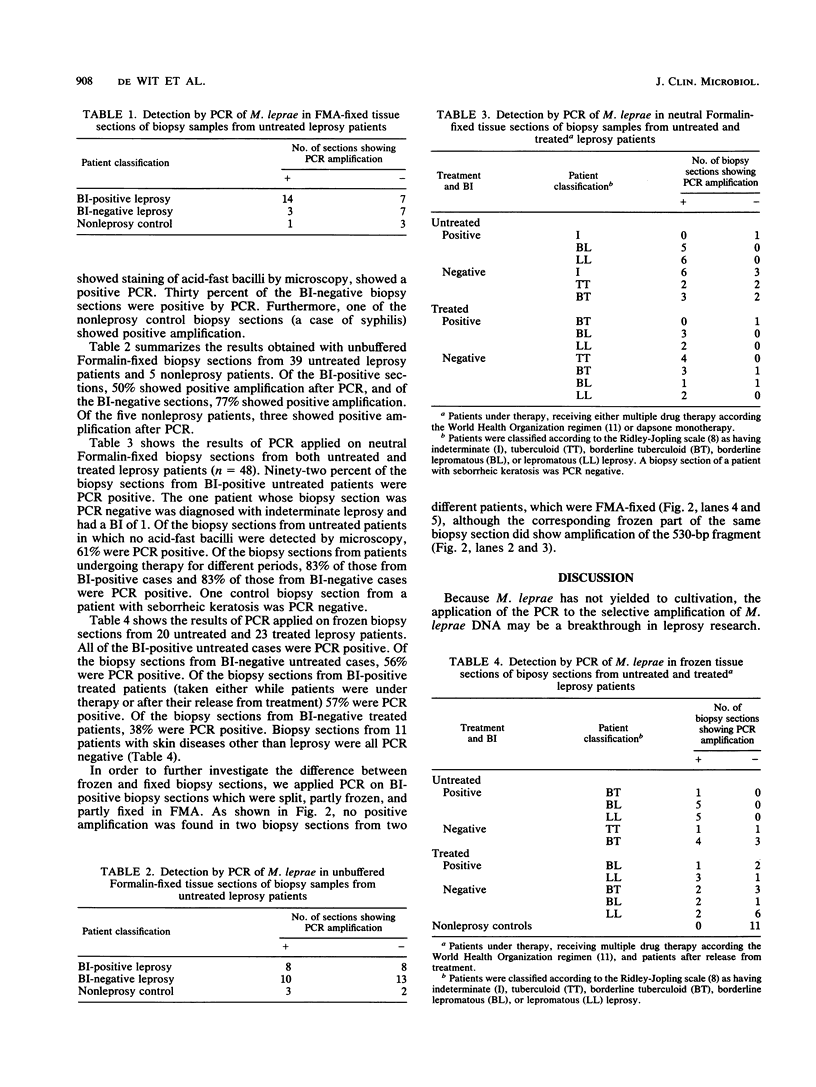
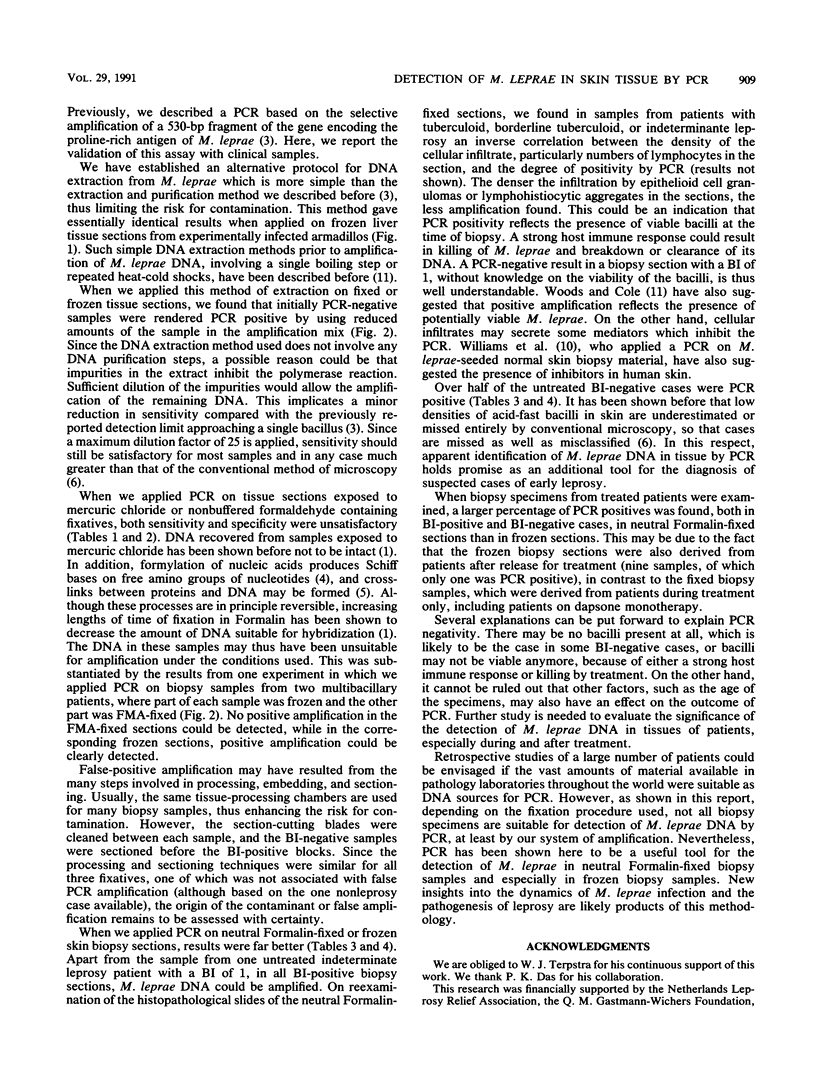
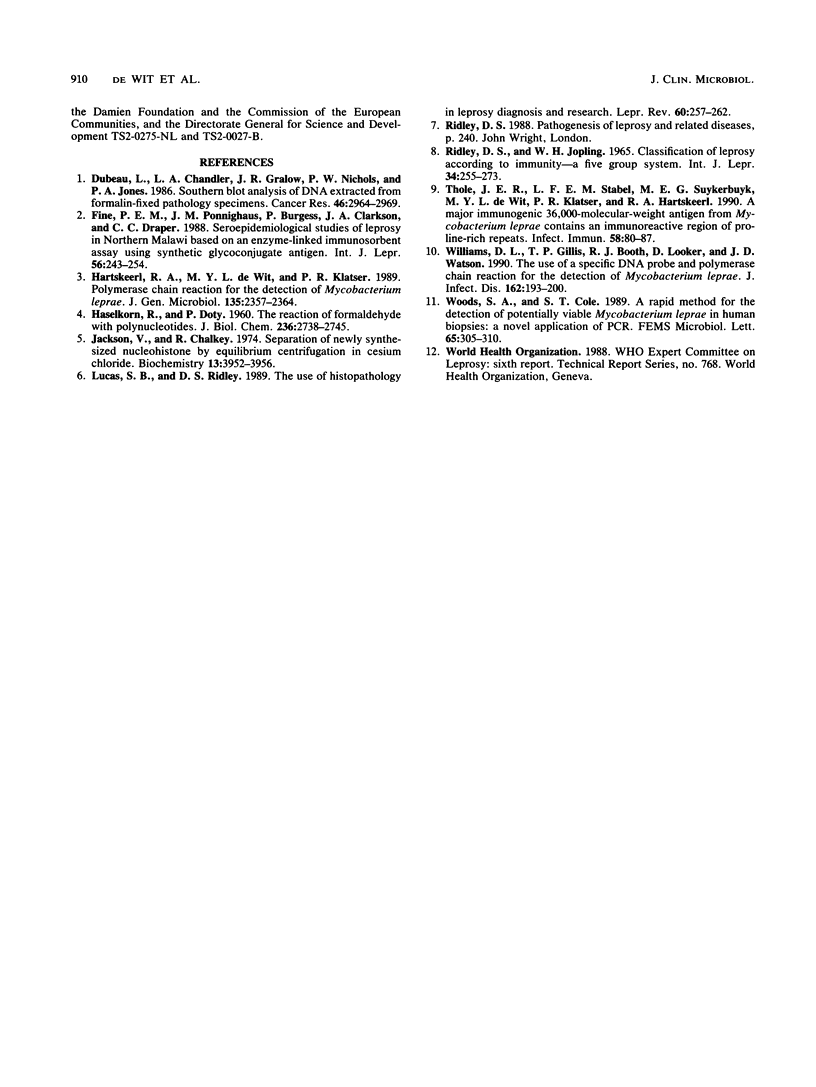
Images in this article
Selected References
These references are in PubMed. This may not be the complete list of references from this article.
- Dubeau L., Chandler L. A., Gralow J. R., Nichols P. W., Jones P. A. Southern blot analysis of DNA extracted from formalin-fixed pathology specimens. Cancer Res. 1986 Jun;46(6):2964–2969. [PubMed] [Google Scholar]
- Fine P. E., Ponnighaus J. M., Burgess P., Clarkson J. A., Draper C. C. Seroepidemiological studies of leprosy in northern Malawi based on an enzyme-linked immunosorbent assay using synthetic glycoconjugate antigen. Int J Lepr Other Mycobact Dis. 1988 Jun;56(2):243–254. [PubMed] [Google Scholar]
- HASELKORN R., DOTY P. The reaction of formaldehyde with polynucleotides. J Biol Chem. 1961 Oct;236:2738–2745. [PubMed] [Google Scholar]
- Hartskeerl R. A., de Wit M. Y., Klatser P. R. Polymerase chain reaction for the detection of Mycobacterium leprae. J Gen Microbiol. 1989 Sep;135(9):2357–2364. doi: 10.1099/00221287-135-9-2357. [DOI] [PubMed] [Google Scholar]
- Jackson V., Chalkley R. Separation of newly synthesized nucleohistone by equilibrium centrifugation in cesium chloride. Biochemistry. 1974 Sep 10;13(19):3952–3956. doi: 10.1021/bi00716a021. [DOI] [PubMed] [Google Scholar]
- Lucas S. B., Ridley D. S. The use of histopathology in leprosy diagnosis and research. Lepr Rev. 1989 Dec;60(4):257–262. doi: 10.5935/0305-7518.19890031. [DOI] [PubMed] [Google Scholar]
- Ridley D. S., Jopling W. H. Classification of leprosy according to immunity. A five-group system. Int J Lepr Other Mycobact Dis. 1966 Jul-Sep;34(3):255–273. [PubMed] [Google Scholar]
- Thole J. E., Stabel L. F., Suykerbuyk M. E., De Wit M. Y., Klatser P. R., Kolk A. H., Hartskeerl R. A. A major immunogenic 36,000-molecular-weight antigen from Mycobacterium leprae contains an immunoreactive region of proline-rich repeats. Infect Immun. 1990 Jan;58(1):80–87. doi: 10.1128/iai.58.1.80-87.1990. [DOI] [PMC free article] [PubMed] [Google Scholar]
- Williams D. L., Gillis T. P., Booth R. J., Looker D., Watson J. D. The use of a specific DNA probe and polymerase chain reaction for the detection of Mycobacterium leprae. J Infect Dis. 1990 Jul;162(1):193–200. doi: 10.1093/infdis/162.1.193. [DOI] [PubMed] [Google Scholar]
- Woods S. A., Cole S. T. A rapid method for the detection of potentially viable Mycobacterium leprae in human biopsies: a novel application of PCR. FEMS Microbiol Lett. 1989 Dec;53(3):305–309. doi: 10.1016/0378-1097(89)90235-8. [DOI] [PubMed] [Google Scholar]



